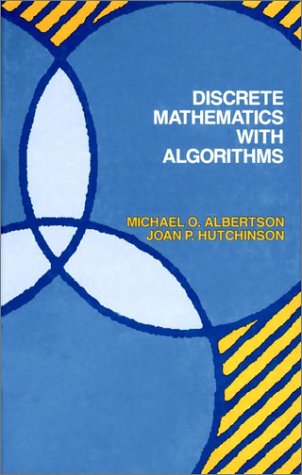
Discrete Mathematics with Algorithms
by M. O. Albertson, J. P. Hutchinson
Publisher: J. Wiley 1988
ISBN/ASIN: 0471849022
ISBN-13: 9780471849025
Number of pages: 550
Description:
This first-year course in discrete mathematics requires no calculus or computer programming experience. The approach stresses finding efficient algorithms, rather than existential results. Provides an introduction to constructing proofs (especially by induction), and an introduction to algorithmic problem-solving. All algorithms are presented in English, in a format compatible with the Pascal programming language.
Download or read it online for free here:
Download link
(14MB, PDF)
Similar books
 A Spiral Workbook for Discrete Mathematics
A Spiral Workbook for Discrete Mathematicsby Harris Kwong - Open SUNY Textbooks
This textbook covers the standard topics in discrete mathematics: logic, sets, proof techniques, basic number theory, functions, relations, and elementary combinatorics. It explains and clarifies the unwritten conventions in mathematics.
(7235 views)
 Discrete Mathematics
Discrete Mathematics- Wikibooks
Discrete mathematics is the study of mathematical structures that are fundamentally discrete rather than continuous. This book will help you think well about discrete problems: problems where tools like calculus fail because there's no continuity.
(15275 views)
 Discrete Math for Computer Science Students
Discrete Math for Computer Science Studentsby Ken Bogart, Cliff Stein - Dartmouth College
It gives thorough coverage to topics that have great importance to computer scientists and provides a motivating computer science example for each math topic. Contents: Counting; Cryptography and Number Theory; Reflections on Logic and Proof.
(9801 views)
 Temporal Networks
Temporal Networksby Petter Holme, Jari Saramäki - arXiv
In this review, the authors present the emergent field of temporal networks, and discuss methods for analyzing topological and temporal structure and models for elucidating their relation to the behavior of dynamic systems.
(12180 views)